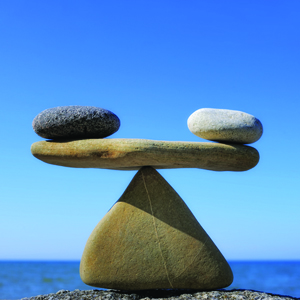The Art of
Replenishing Testosterone
 It’s not hard to make a diagnosis of low testosterone in men. Tell-tale signs include:
It’s not hard to make a diagnosis of low testosterone in men. Tell-tale signs include:
- Less muscle mass and increased fat mass, more flabbiness
- Female-like breasts and fat accumulating around the waist
- Thinner skin and lines developing in the nails
- More irritability and depression
- Decreased interest in sex
Anybody can see these symptoms and draw a conclusion.
We have the ability to replenish low testosterone by topping it off with more testosterone. But our experience with this simple principle is not always playing out the way we think it should. When it comes to replenishing testosterone, as with many other health concernts, the human body presents us with a lot more complexity than originally thought.
Let’s review some of what we’ve learned about replenishing testosterone. We’ll consider testosterone’s interactions with other hormones (especially estrogen) and how liver function affects it. We’ll look at some of the supplements and natural products that might enhance testosterone function. And we’ll touch on some of the lifestyle choices that also make a difference with regard to testosterone levels.
Sex Hormone-Binding Globulin (SHBG)
Basically, SHBG is a protein that serves as a carrier for estrogens and androgens. It could be considered a reservoir for those hormones, but when the hormone is bound to SHBG, the hormone is not in the tissue cell doing its work.
High estrogen and cortisol levels stimulate the liver to produce more SHBG, but with a see-saw effect. As the SHBG rises, the androgen hormones (dihydrotestosterone, testosterone and DHEA) jump on it first, potentially edging out the estrogens.
It is important, therefore, to not only know the total testosterone level in the serum but also the amount of SHBG. Total testosterone levels could be normal, but if testosterone is predominately riding around on SHBG, then functionally there is a deficit.
Estrogens
The relationship between estrogens and testosterone becomes even more entangled. Men need estrogens, just as women do. The right balance of estrogen to testosterone is needed for creating sperm and contributes to the sex drive. However, these days, the balance is often compromised. We are now exposed to more and more estrogens, whether deliberately from foods like soy, or inadvertently from the pesticides, insecticides and plastics in our environment. The burden of more estrogens and estrogen-like substances in our systems has a clear impact on testosterone activity.
Additionally, the normal pathway to produce estrogens is through the action of the enzyme aromatase on testosterone. Taking prescription medications like diuretics and cardiovascular drugs can lead to over activity of aromatase, as can having too little zinc. Conversely, aromatase activity is calmed by adequate amounts of the hormone progesterone.
Hormones and the Liver
The liver also gets into the estrogen muddle because of its role in detoxification. The liver needs methyl groups and sulfur groups (more on that later) to prepare estrogens for excretion. Without enough of those supplies, estrogens can build up and again impact SHBG production.
The liver is supposed to get rid of the extra SHBG if it can. But that’s not the end of it. The liver may do its detoxification and bundle the estrogens out to the bowel for final excretion, but some of the unhealthy bugs there may produce an enzyme that unbundles the estrogens and sends them right back into the blood stream and, yes, back again to stimulate even more SHBG.
Other Hormones
Both hyperthyroidism (by excessive conversion of testosterone to estrogen) and hypothyroidism (with a tendency to obesity) also negatively affect testosterone levels. In addition, if growth hormone is low, then the androgen hormones do not perform as well, and a low cortisol level tends to lead to more estrogen production and higher SHBG.
Natural Products for Replenishing Testosterone
There are many natural products that can help optimize testosterone function. Those that help produce more testosterone are:
- Zinc
- DHEA
- Tribulus terrestris or puncture vine (by enhancing DHEA levels)
Products that enhance testosterone activity include:
- Nettle root (by interfering with SHBG binding)
- Fish oils (by reducing SHBG levels)
Products that help control aromatase activity include:
- Progesterone
- Bioflavanoids such as chrysin and quercitin
Products that can help effectively reduce the burden of estrogens include:
- Vitamins such as B2, B6, B12 and folate supply methyl groups to help detoxify estrogens
- N-acetylcysteine (NAC) is a precursor for gluthathione, which provides sulfur for detoxification
- Calcium D glucarate helps inactivate the bacterial enzyme that creates the estrogen unbundling in the bowel
- Supplements like indole-3-carbinol and diindolylmethane (DIM), which are extracted from cruciferous vegetables such as broccoli, minimize the effects of the estrogen hormones
Lifestyle Choices
Some of the choices made during daily life can also affect testosterone production. For example:
-
- If men wear underwear that is too tight, the testes, which should be at a temperature lower than that of the rest of the body, get too hot and testosterone production is impaired and blood flow to the testes is also compromised
- A glass of red wine almost immediately raises the levels of the estrogen hormones
- Coffee also increases estrogen levels
- Overeating leads to obesity and increased levels of cortisol and estrogens in the fat cells, and consequently more SHBG
- If the diet is too low in protein, aromatase activity is increased
- Low protein intake also leads to increased SHBG, while fats and carbohydrates appear not to affect SHBG
- Physical activity improves testosterone production
- Intensive or chronic stress results in increased SHBG
Finally, testosterone therapy can become an issue in and of itself. Most dosage forms (i.e., creams, gels, patches, injectables) have a suppressing effect on the pituitary hormone output. Pituitary hormones stimulate testosterone production. So, more “topping off” may be needed because there is less of a contribution from the testosterone produced by the body.
This newsletter is not intended to present an exhaustive review of replenishing testosterone, but merely to highlight the complexity of hormone balance and hormone replenishment. However, well-informed individuals, along with their thoughtful and sympathetic practitioners, can still make great strides toward healthy and productive aging.




